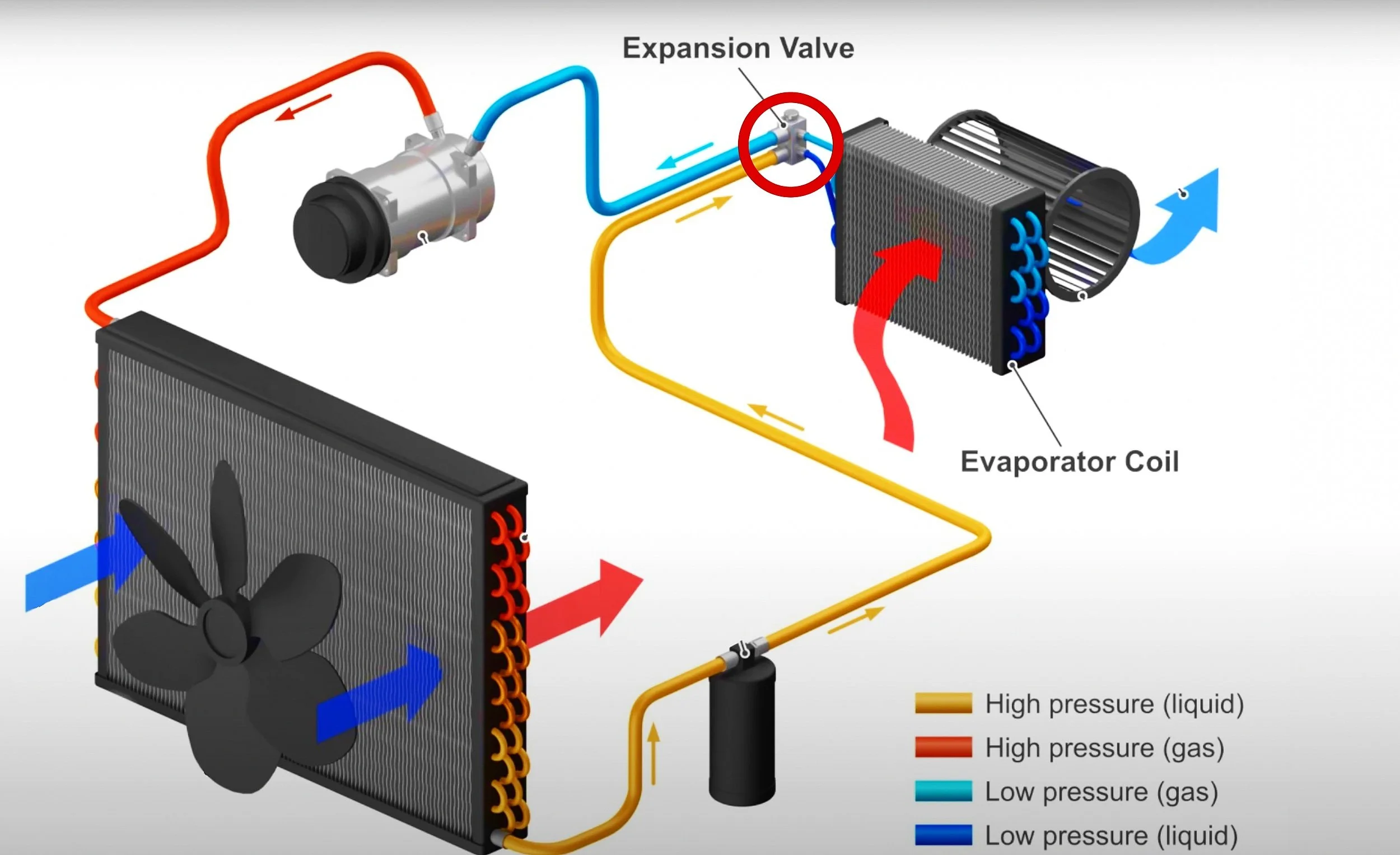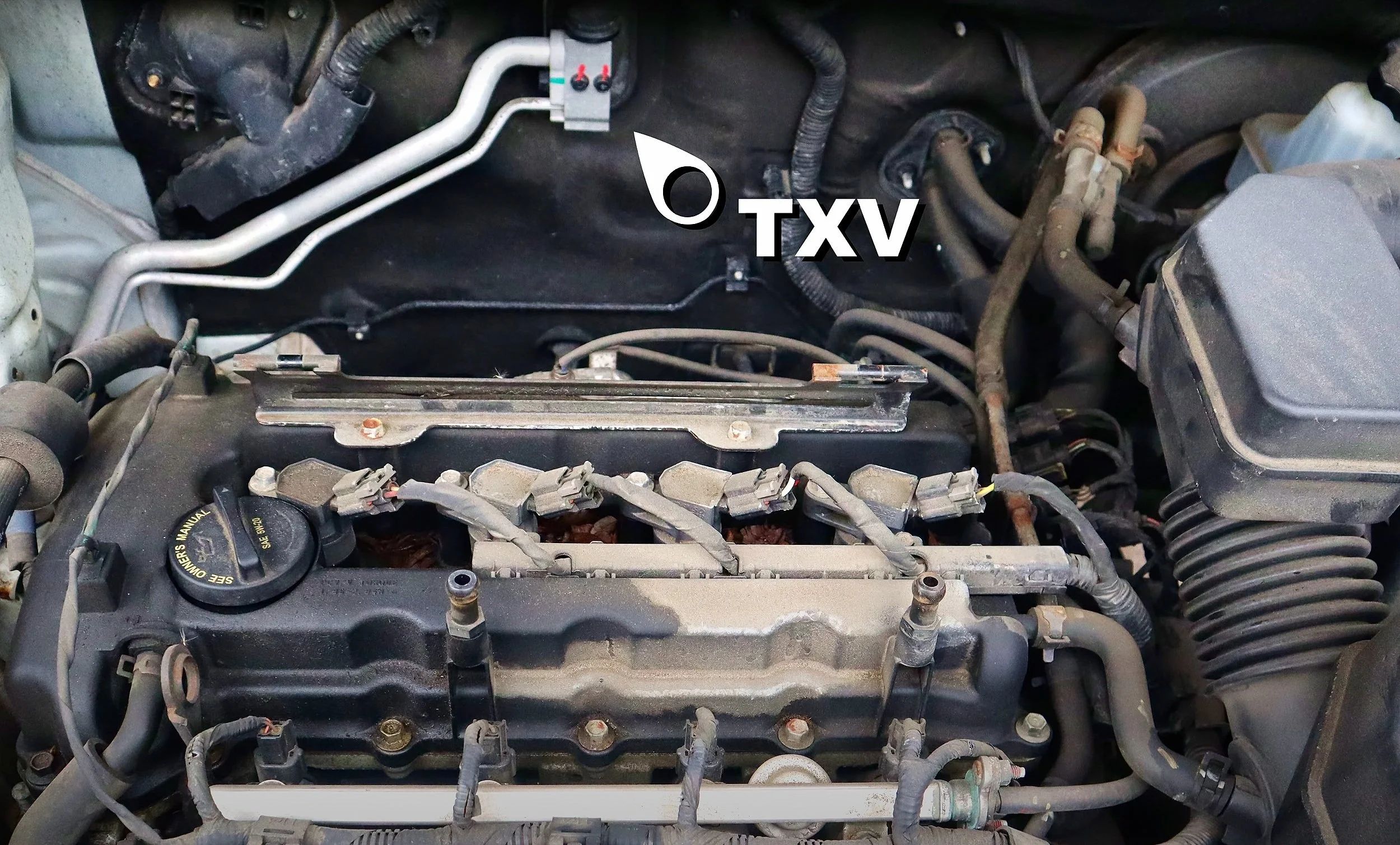SYMPTOMS OF A BAD EXPANSION VALVE
The expansion valve is an important component in your car's AC system. It transforms the high-pressure liquid refrigerant into a colder, low-pressure liquid. It also regulates the amount of the refrigerant that enters the evaporator to ensure smooth operation. If there is too much or too little refrigerant flowing to the evaporator, it will lead to issues within the AC system.
location
The expansion valve will usually be located either on the firewall or behind the glovebox compartment.
It’s important to note that not all cars have an expansion valve. Your car will either have an expansion valve or an orifice tube. They both serve the same purpose in the a/c system.
symptoms
POOR A/C PERfOrMANCE
The first symptom is noticing poor a/c performance. A bad expansion valve can cause too much or too little refrigerant to enter the evaporator. This could disrupt the whole a/c operation, resulting in warm air blowing from the vents.
LEAKING
The second symptom you could be experiencing is a leaking expansion valve. If the valve seals aren’t doing their job properly, the refrigerant can leak out. I recommend using a leak detector to see if there are any leaks on the expansion valve.
How to test a faulty expansion valve
The best way to identify if the expansion valve is faulty is to use an a/c manifold gauge. Follow the steps below:
Hook up your gauge to the service ports.
Start the car and let it reach the normal operating temperature.
Set the a/c to the coolest setting & roll the windows all the way down.
The readings will depend on your vehicle and the temperature outside. However, the general readings should be about 25 to 60 PSI on the low side and 130 to 350 PSI on the high side.
A stuck open expansion valve will have high readings on the low-pressure side and normal/low readings on the high-pressure side.
On the other hand, if the expansion valve is stuck-closed, the readings will be abnormally low on the low-pressure side, and normal/too high on the high-pressure side.
Another way to ensure the expansion valve is at fault is to check your gauge readings once the vehicle has been off for some time. Both pressures should be equal. If not, your TXV could be clogged.
If you decide to replace your expansion valve, I also recommend replacing the receiver drier. It helps remove moisture and contaminants from the refrigerant, ensuring the a/c system functions efficiently.
Check out my YouTube video!
Disclaimer: Some links in this article may be affiliate links.





